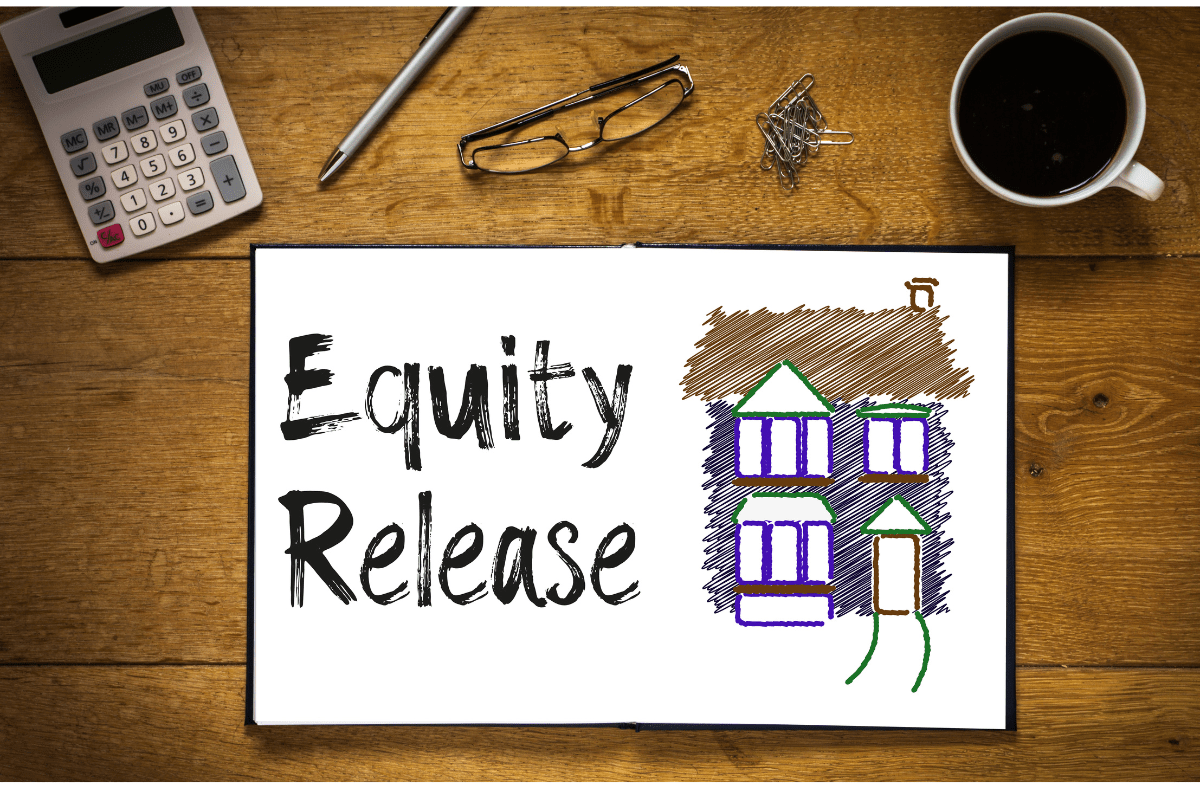Equity release has become a popular financial option for homeowners aged 55 and over who are looking to unlock the value tied up in their property without the need to sell their home. One of the most common types of equity release is a lifetime mortgage. Lets find out how equity release works.
What is Equity Release?
Equity release is a way of accessing the value of your home without having to move out or sell it. It allows you to borrow money against the equity in your home – the part of the property that you own. Equity is calculated by subtracting what you owe on your mortgage (if any) from the current market value of your home.
For example, if your home is worth £300,000 and you owe £100,000 on your mortgage, your equity would be £200,000. With equity release, you can access this money without needing to sell your home. This could provide you with the funds to enhance your lifestyle, pay for home improvements, or help with retirement planning.
For homeowners aged 55 or over, a lifetime mortgage is one of the most common and straightforward methods of releasing equity from your property.
Who Qualifies for Equity Release?
To qualify for equity release, you must be 55 years or older and your home must be worth a minimum of £70,000. If you still owe money on your mortgage when you take out equity release, you must pay off the remainder using the funds from the released equity.
How Does a Lifetime Mortgage Work?
A lifetime mortgage is a type of equity release provides a cash lump sum or regular income which does not need repaying until you pass away or move into care. Your estate then repays the lender, usually from the proceeds of your property’s sale. Unlike traditional mortgages, with a lifetime mortgage, you do not have to make monthly repayments (unless you choose to). Instead, the loan is repaid when the last borrower dies or moves into long-term care. You can borrow from £10,000. The maximum amount you can borrow will depend on the age and the value of your property.
Facts About Lifetime Mortgages
- The loan is secured against the value of your property. This means that you continue to own and live in your home as usual, but the lender has a legal claim on the property if the loan is not repaid during your lifetime.
- No Monthly Repayments (If You Don’t Want to) – One of the biggest advantages of a lifetime mortgage is the flexibility it offers. You can choose whether or not to make monthly repayments. If you choose not to make repayments, the interest on the loan will be added to the loan balance. This means the loan amount will grow over time, but there is no immediate financial burden on your monthly budget.
- The loan is typically repaid when the last borrower passes away or goes into long-term care. At this point, the property is sold, and the proceeds are used to pay off the loan. If the value of the property exceeds the loan amount, the remaining value goes to your beneficiaries or estate.
- Flexible Payment Options – While many lifetime mortgage holders opt for no repayments, some may choose to make monthly interest payments or repay the capital in installments. This can help manage the growth of the loan over time, especially if you want to preserve more equity for your beneficiaries.
- Money left over Goes to Your Beneficiaries – Once the loan is repaid, any remaining funds from the sale of the property will go to your beneficiaries. However, it’s important to note that if the value of your property is not enough to cover the loan, some plans may offer no negative equity guarantees, which means your beneficiaries will not be required to pay back more than the home’s value.
- Considerations for Long-Term Care – If the proceeds from the sale of the home are required to fund long-term care costs, this can affect the amount left for your beneficiaries. In some cases, it’s possible to set up safeguards to ensure that the amount left to loved ones is maximised.
Benefits of Lifetime Mortgages
A lifetime mortgage can be a great solution for homeowners who need access to funds in later life but don’t want the hassle or disruption of moving house. Here are some of the benefits of lifetime mortgages:
- Stay in Your Home – You continue to live in and enjoy your home, with no need to downsize or relocate.
- No Monthly Payments – The option to not make monthly payments is a key benefit. Interest is rolled up, and repayment occurs only when the property is sold.
- Flexible and Customisable – Lifetime mortgages offer flexible options, allowing you to tailor your borrowing to suit your needs. Whether you want a lump sum, a draw down facility, or monthly repayments, there’s an option for you.
- Protect Your Family’s Inheritance – Lifetime mortgages offer the potential to protect your inheritance, with certain options allowing you to ring-fence a percentage of the property’s value for your beneficiaries.
- Regulated – Lifetime mortgages are fully regulated by the Financial Conduct Authority (FCA), ensuring that your rights as a borrower are protected.
A lifetime mortgage is a powerful and flexible financial tool for homeowners over the age of 55 who want to release equity from their property without the need to sell. With various options to suit different financial needs, it can help you unlock the value tied up in your home while allowing you to continue living there.
However, it’s important to fully understand the implications of equity release before proceeding, as it can affect the inheritance you leave behind and the amount of equity left in your home. Consulting with a financial advisor is recommended to ensure it’s the right option for your circumstances.
If you’re interested in learning more about how a lifetime mortgage can help you, reach out to an equity release advisor today. They can guide you through the process and help you decide if this option suits your financial goals.

